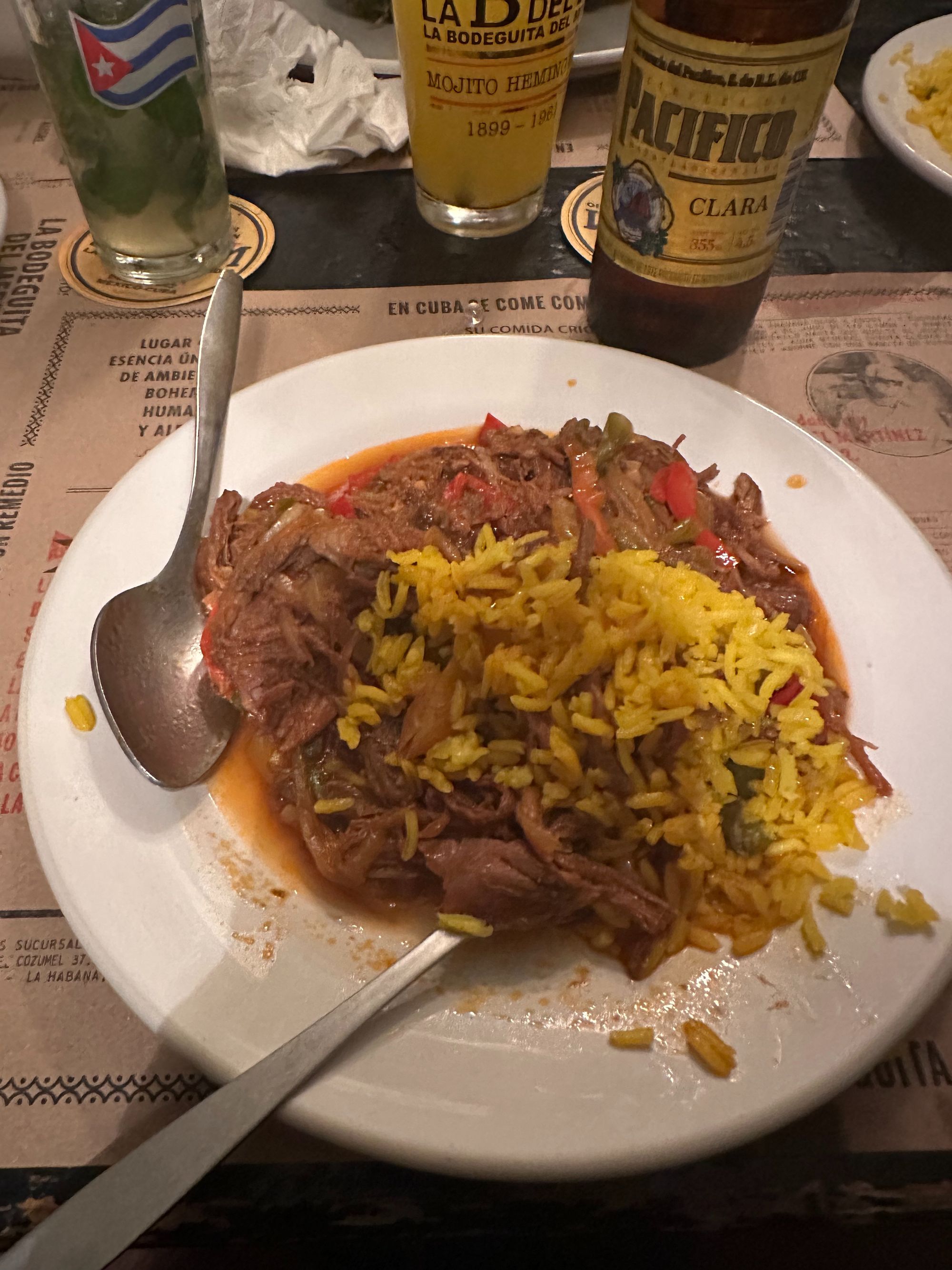All right! Time for another excursion.
I love going out with the other students and the teachers. But first, I want to share that Karimi did me a solid and to make up for the confusion last week of learning the indefinido like 3 times, she got me a special one on one session with Carlos to go over prepositions.
Carlos did an excellent job, and he gave me a super valuable tip. Now, the one thing I have learned about Spanish, it it is hard to believe how true this is - nearly everything has at least one exception or irregularity (hey, I speak English, I get it) but it is a seriously context dependent language. Yes, it is possible (see my earlier posts) to take the exact same sequence of words and radically change its meaning by the context it is put in. Think of how as an English speaker you can invert the meaning of something by just changing your tone. Or Zig Zigler's famous, "I never said she stole the money" - emphasis each word one at a time and you get 7 sometimes subtly, sometimes not subtly different meaning.
I share this because - well I'm going to share this rule, and someone, somewhere will say, "But wait..." or "That's not true!" and well, I'm not really interested in that debate. I get it. But I found this useful so I thought I would share.
Por and Para - Just shoot me now.
Many, many English speakers have trouble with Por and Para. Never mind that in English we say crazy things like,. "Get in the car" but "Get on the plane." So how do you make sense of these?
Carlos gave me two tools and so far, they have worked wonders for me.
Rule 1: Is it in the past for the future?
As a general rule, por is used to talk about things that happened in the past. Para is used to talk about the future.
Let's look at Por.
• It is used to describe causes (like causes and effect chains).
• Motives (this is happening now because...)
• Indefinite time periods
• or the passive voice.
The one odd ball is:
• Por is used to describe movement through something.
If you are assigning attribution to something and you are looking toward the past, it is likely a safe bet to use por. My example sentences are:
• No podia salir por el coronvirus. - I could not go out for (because+) the conoronua virus.
+ : often, we use because instead of por in English, and the same is true in Spanish, but bear with me here.
• Fui a Arizona por el 2019 - I went to Arizona in 2019. You don't know exactly when, but notice it is in the past (backward looking). It does not make much sense to try and use para here. If you must pick between por and para (like with expressions of time) being backward looking makes por the easy choice.
• Pasé por la puerta - I passed through the door.
• El libro fue escrito por Christina Carlson - the book was written by Christina Carlson. Now we use "by" here, but again, if you have to pick between por and para, the book is already written, so it is in the past, therefore por makes more sense. The book was written. It's done.
Let's look at Para
• It's aimed at the future.
• It is used to express finality (in the future)
• It defines destinations
• It expresses personal opinions (which are also often future oriented).
I have heard it expressed that para can be thought of as an arrow (usually pointing) forward, or toward someone. The addition of time seems to help me select the right word (but it's not always true - Trabajaba para Disney - I worked for Disney. Disney was the beneficiary of my work, and this happened in the past. So there, nothing is perfect - but when I was working for Disney, they received the benefit of my work like Trabajar -> Disney. It was a direction.
Other examples:
- Para mejorar tu salud - in order to improve your health.
- Consejos para estudiar mejor - advice to study better
- Lugares para visitar en España - places to visit in Spain.
- Pasos para preparar una ensalada - steps to prepare a salad.
In each of these cases, para is looking forward, into the future.
Whereas if my creativity caused me to do something, I could think that I was being pushed from behind - (caused to do something) and that would be por. I'm going to need an example of that.
Hold on a second. ChatGPT to the rescue.
GPT4.0 for the win, and it's super relevant.
Estudio español por mi trabajo. - I study Spanish for work.
This is perfect because it highlights the difference. In this sentence, work is the one motivating me to learn Spanish (I'm not really learning Spanish for work). While my work may be the beneficiary of the learning Spanish, that is not really the intention here. The intention is to explain what is motivating me to learn Spanish.
So, when I work for the benefit of someone else - (future looking) - choose para.
When something is pushing me (which is behind me, or backward past looking) - choose - Por.
I'm sure that was clear as mud.
The rest of the day.
I really enjoy class with Elenor, Sam, and Marylin. We are working our way through speaking and processing the language. Sam and I are comfortable talking, Elenor's listening comprehension is very high because the similarities to French are high. (cheater).
After class, we headed to La Castilla, the palace of Emperor Maximillion, now a national museum.
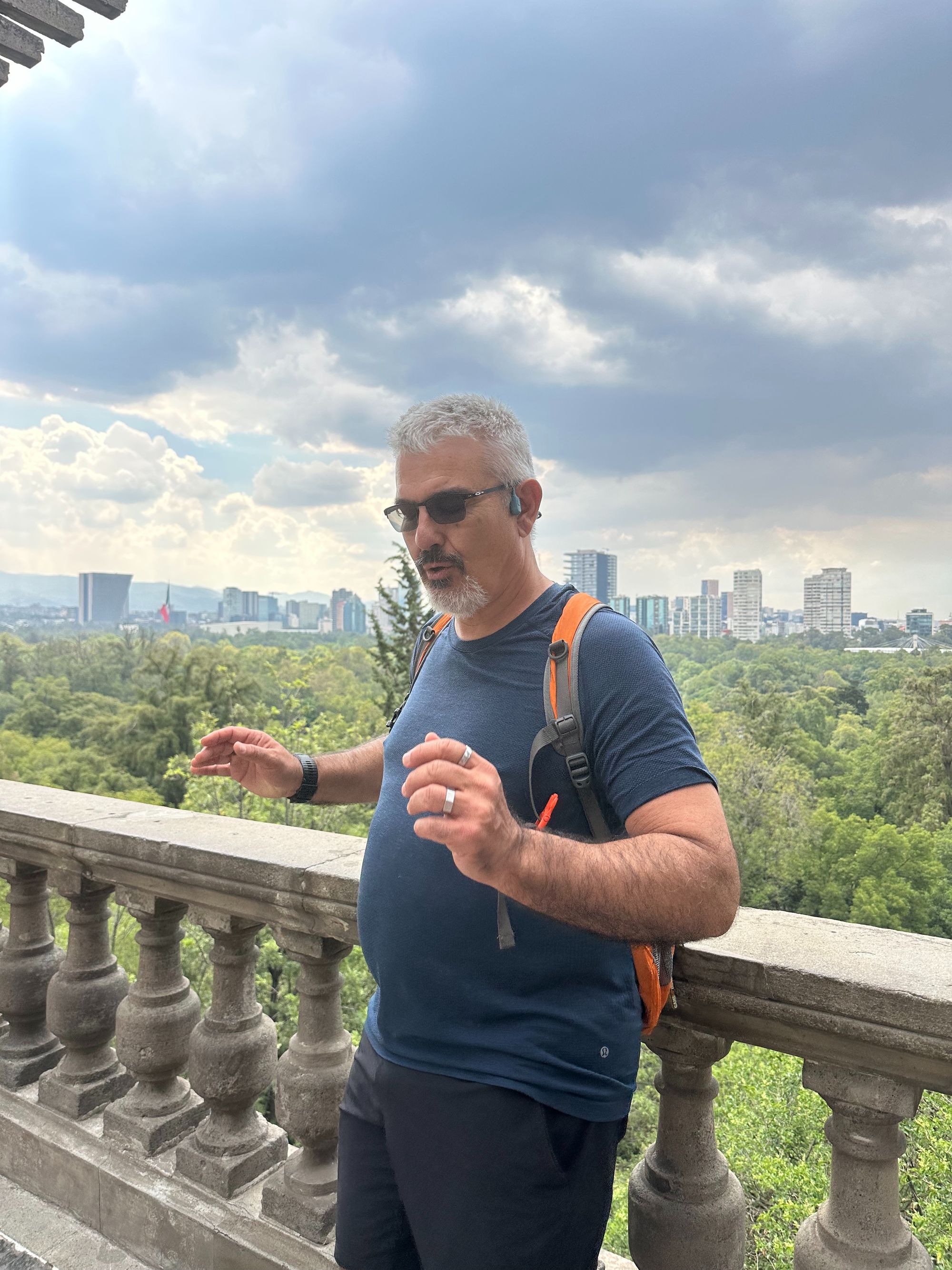
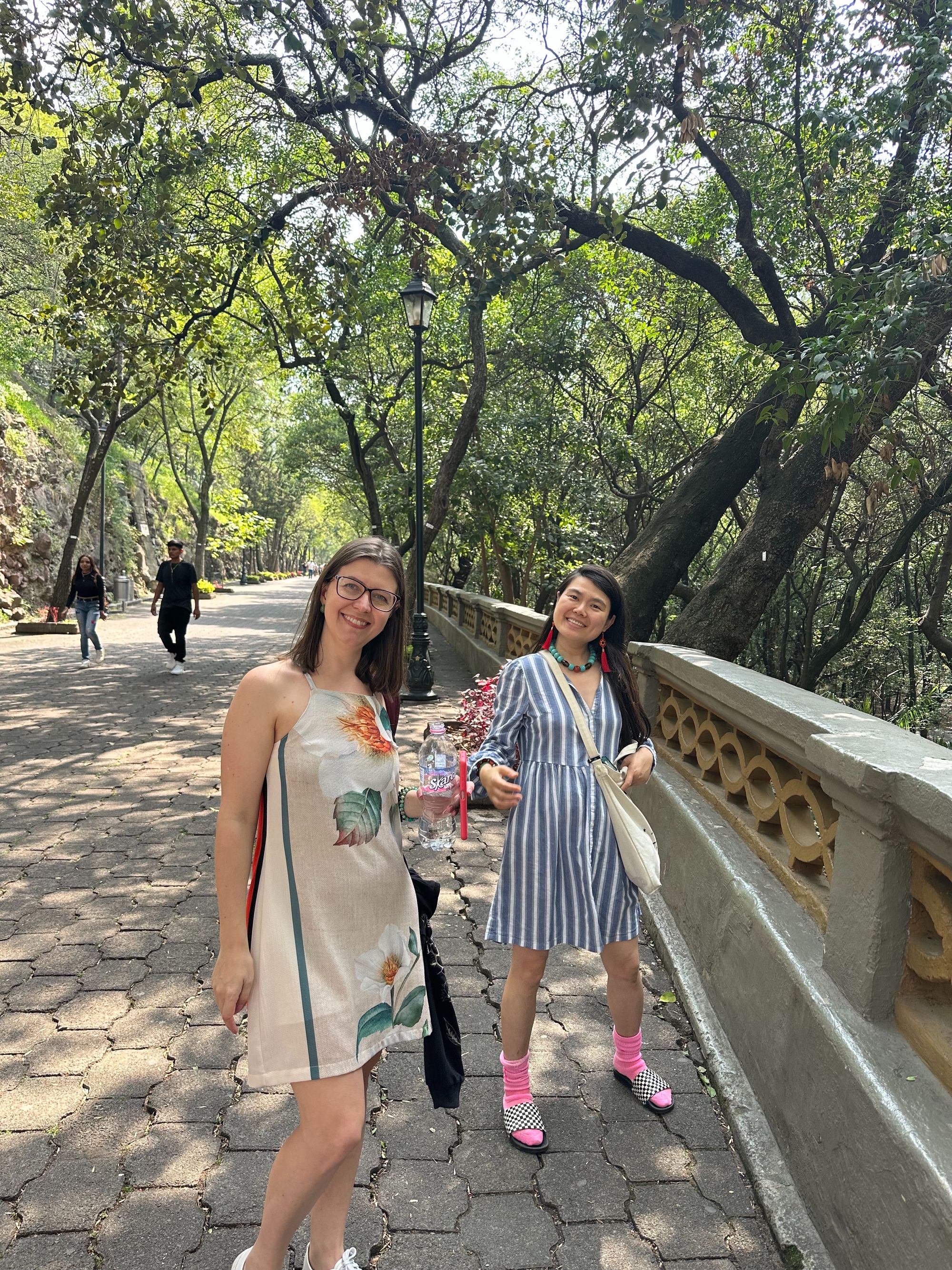
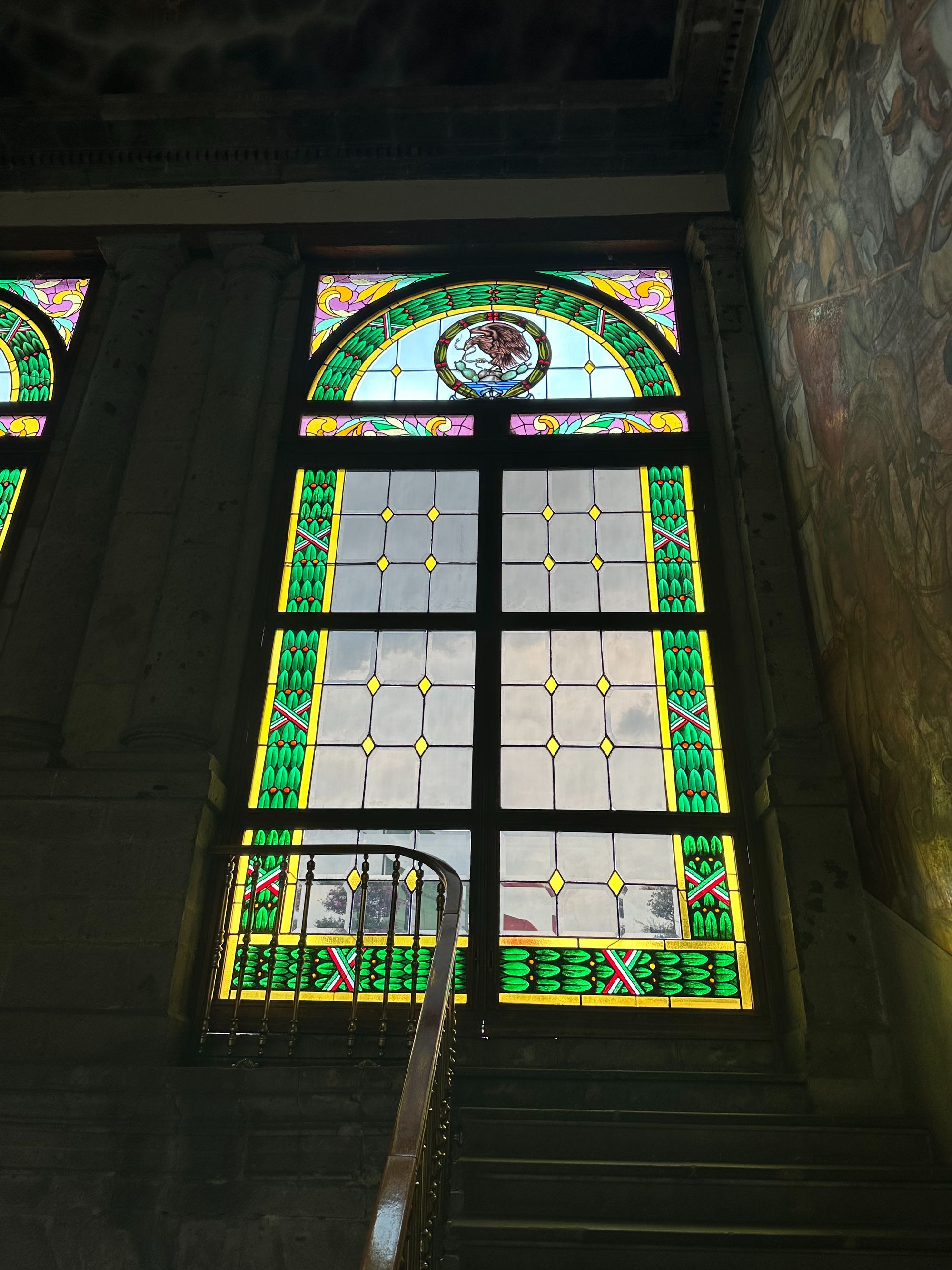
Today's crew consisted of (in order from left to right in the picture - I think you know which one is me):
- Karimi (school)
- Jackie
- Shiho
- Susan
- Adrian (teacher)
- Elenor
We also picked up a random student from China, Susan who joined us.

I know very little of Spanish history, but every country in Latin America has their revolutionary story. I am constantly getting these mixed signals from Mexico, about their incredible heritage from the Aztecs, but also from the Spanish. It seems like they are doing their very best to make peace with their history (I don't know how I could do it better). Yet, I don't know how you reconcile being the children of a proud people who got absolutely crushed, with the fact you are also a child of the people who rained devastation down them? My gut tells me that within present day Mexico there is a story waiting to be told. There is a giant, waiting to awaken.
I don't think it is any accident that so many Mexican film directors have won academy awards recently. I see so many American brands worn in Mexico, and I wonder, where are the Mexican brands? And I'm not talking about who they were 500 years ago, I mean now.
As a side note, I went looking for a quality article of clothing that promoted CDMX. Stacy reminded me not to buy something I would never wear. (Good call). I figured if I could find the Mexican version of dodger hat. I found exactly one T-Shirt that was almost my size that promoted Madera - the main shopping street in Mexico City. I wanted to find something the Mexican's would wear. I haven't seen one yet.
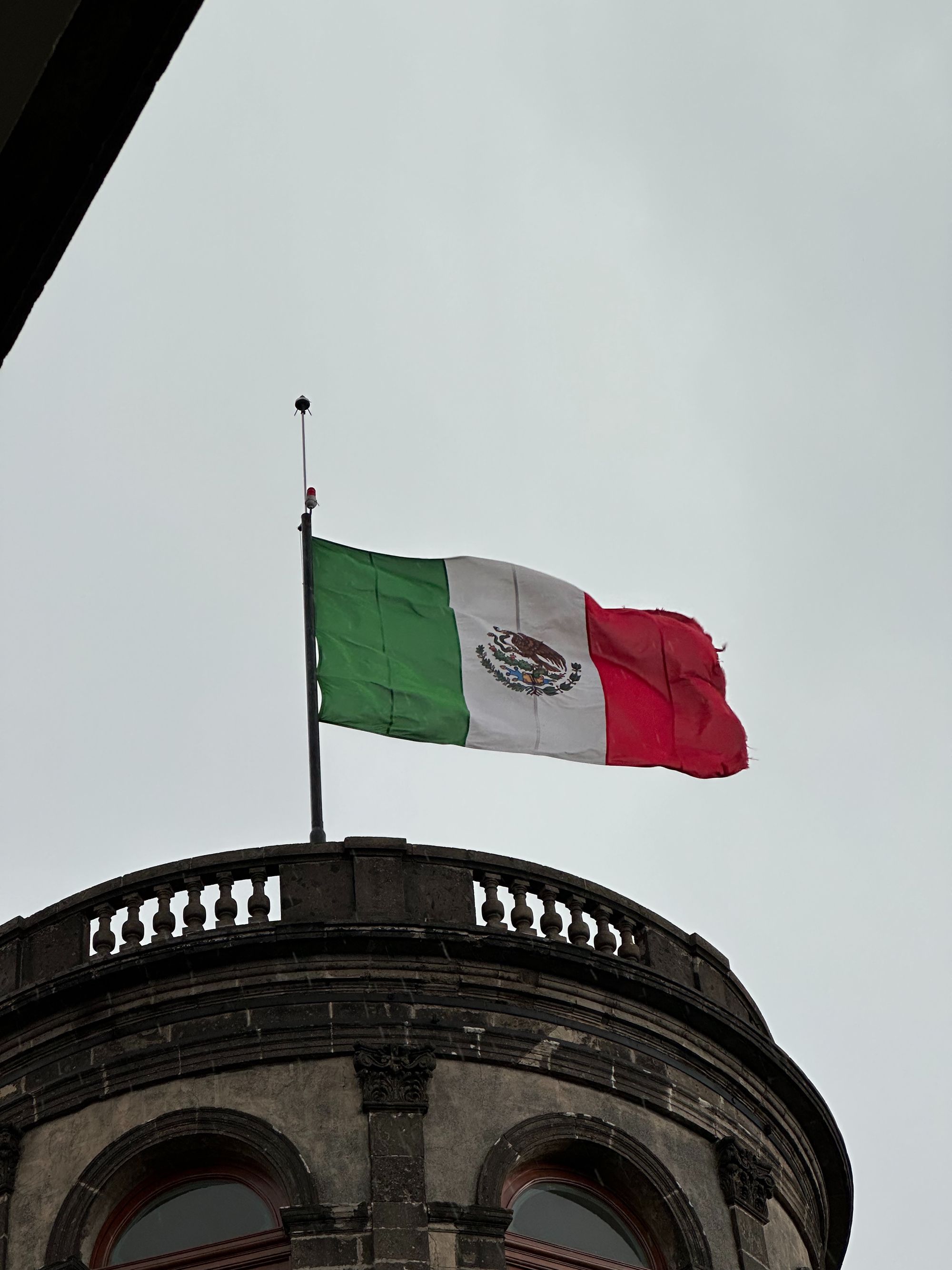
Dinner at Bodega
After we visited the castle, some members peeled off while a small group of us hopped in an Uber and headed to La Bodega Del Medio
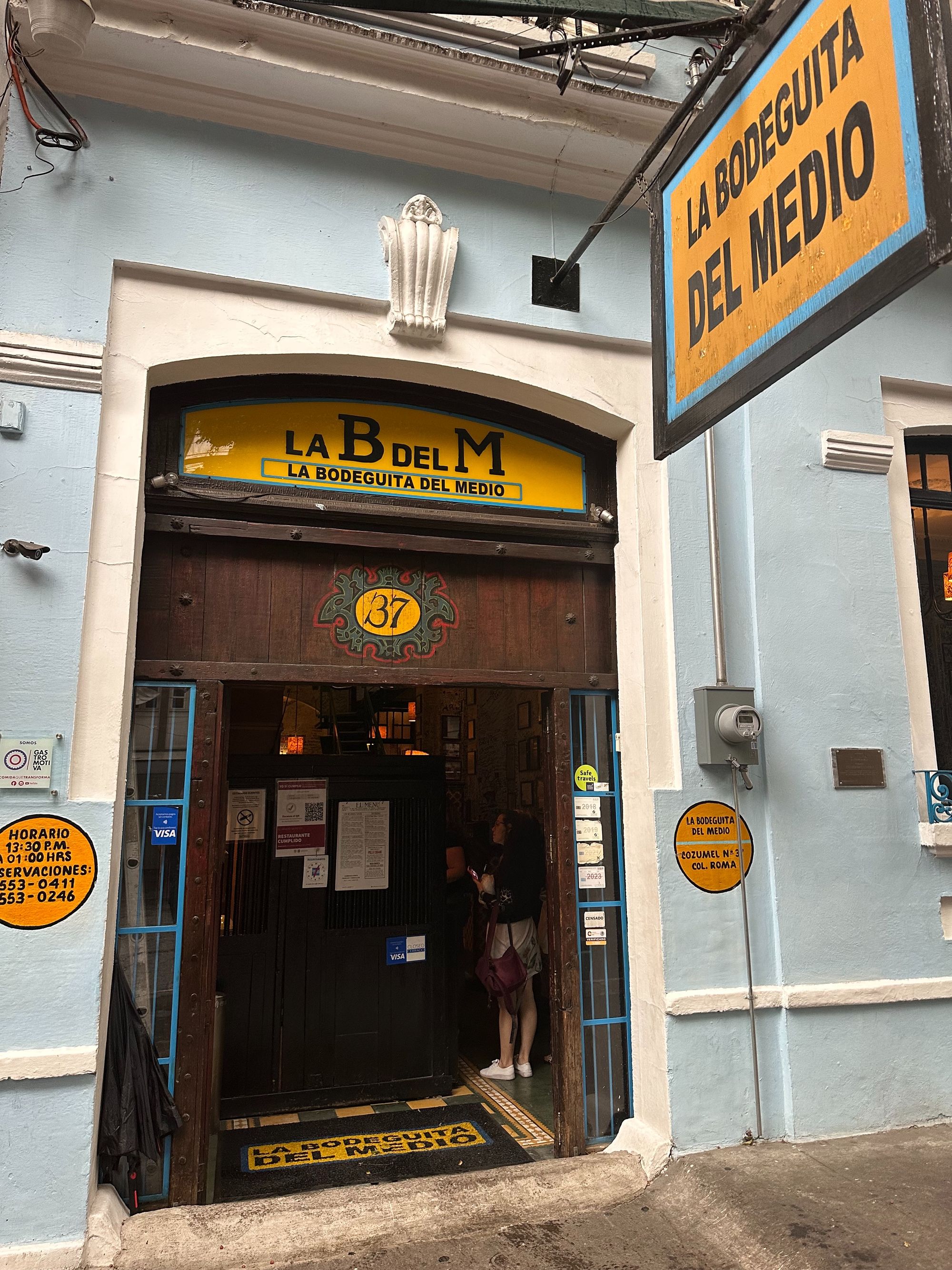
It is a Cuban Restaurant, and the Mojito's and Ropa Veija are to die for.
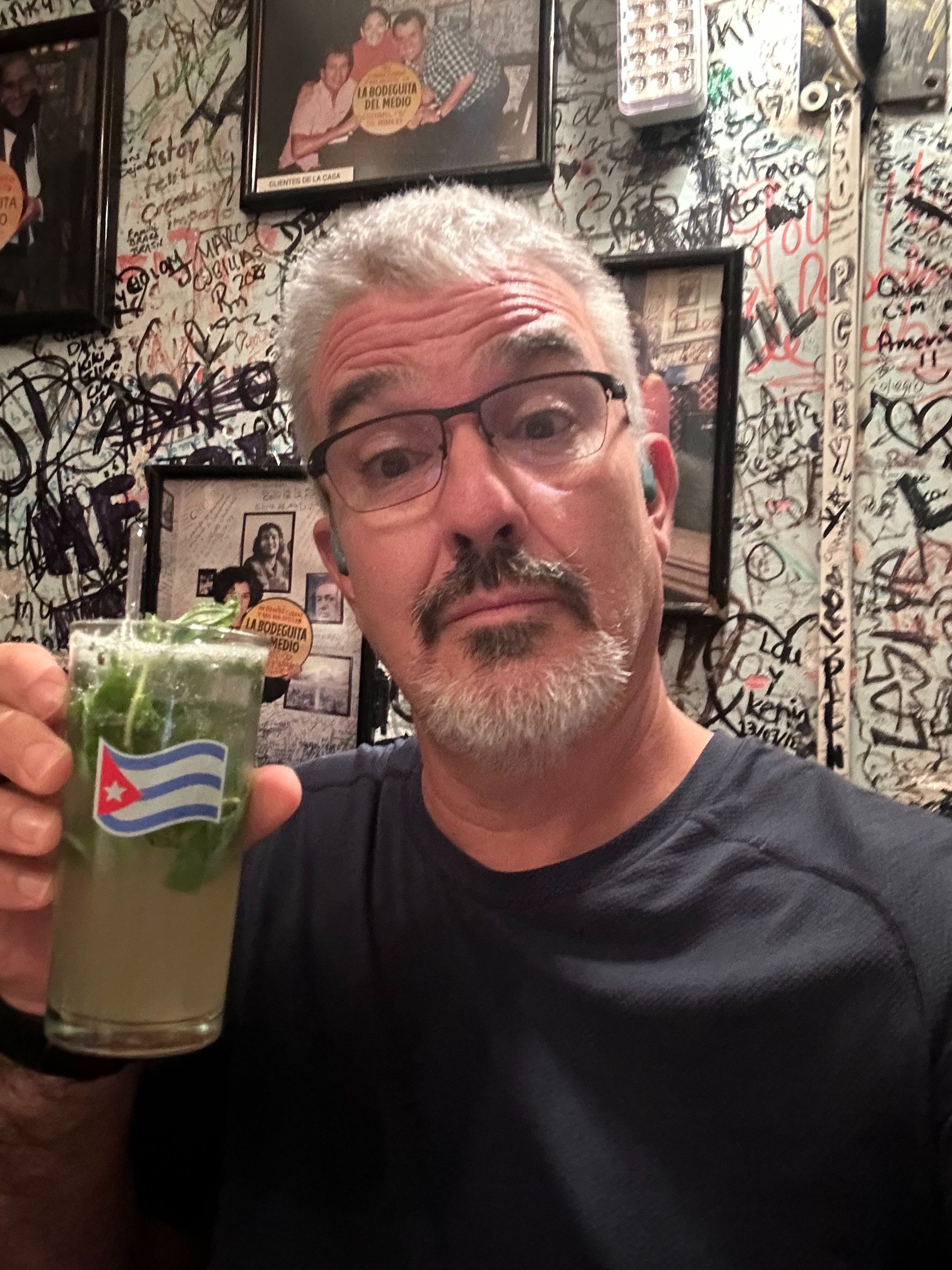
What was really fun about this meal, was that we talked in Spanish almost the entire time. Susan hasn't really learned Spanish yet, and I was surprised to find that it was as struggle to switch back to English. It just felt more natural to talk to Karimi and Jackie in Spanish. Let's call that a win.
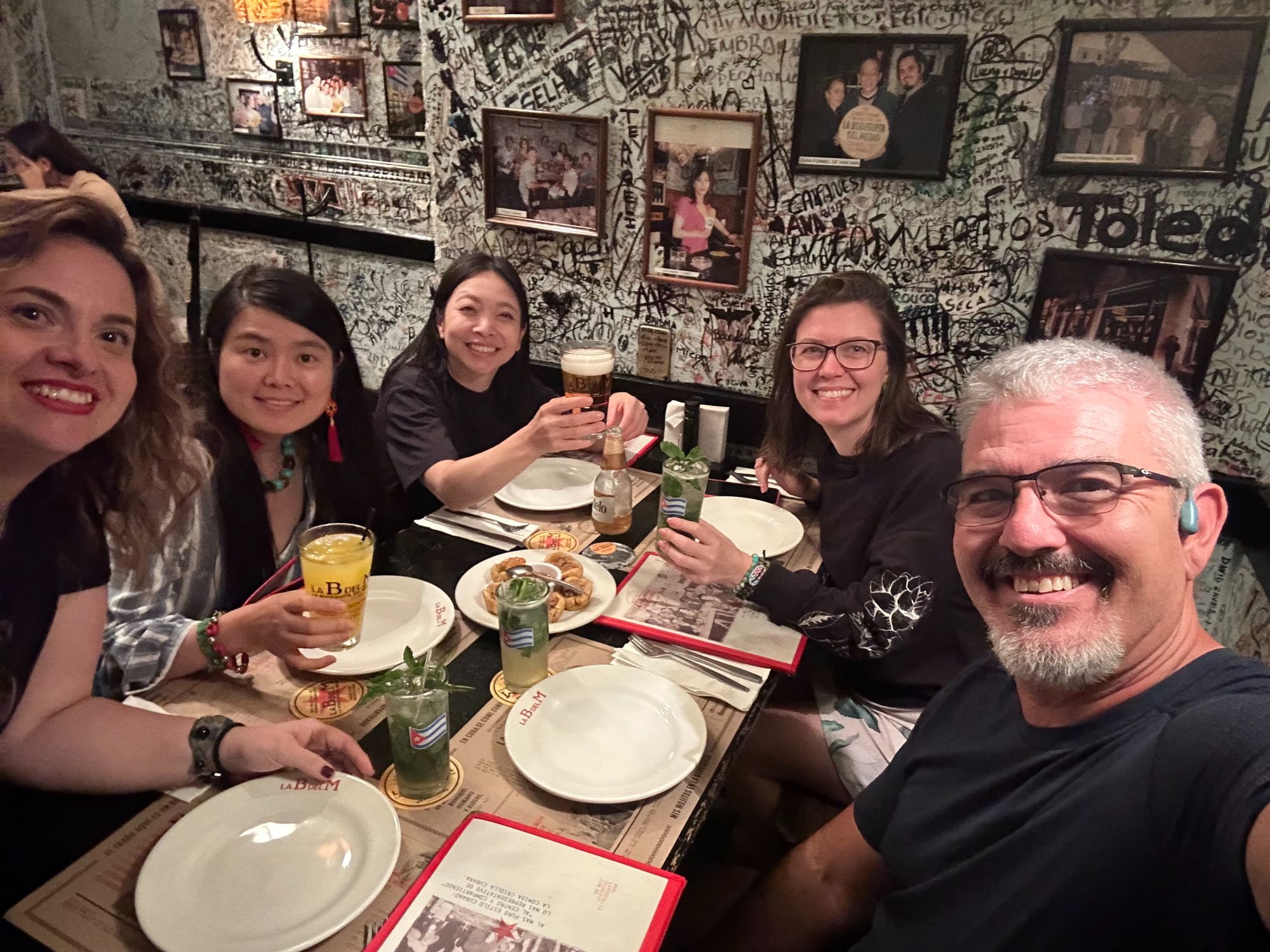
The Ropa Veija is so good, it almost makes it worth a trip to CDMX to try it. Oh, and I highly recommend getting the yellow rice to go with it.
